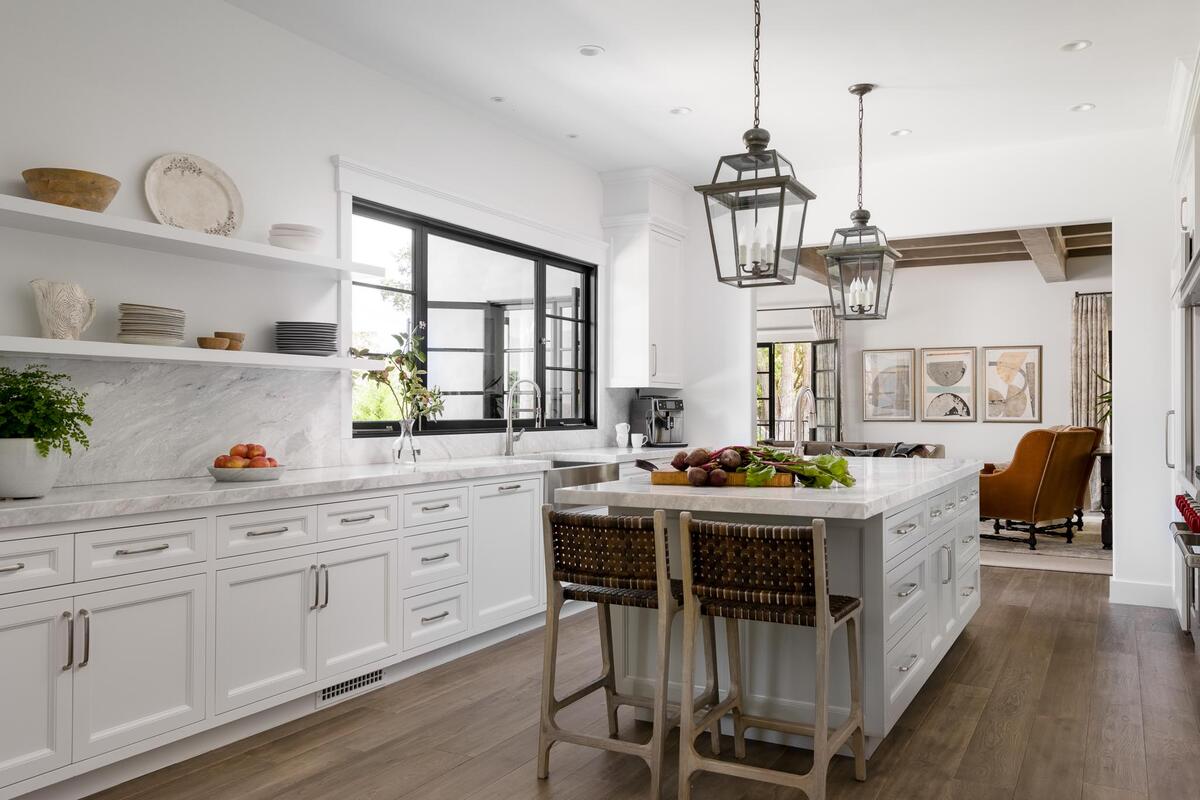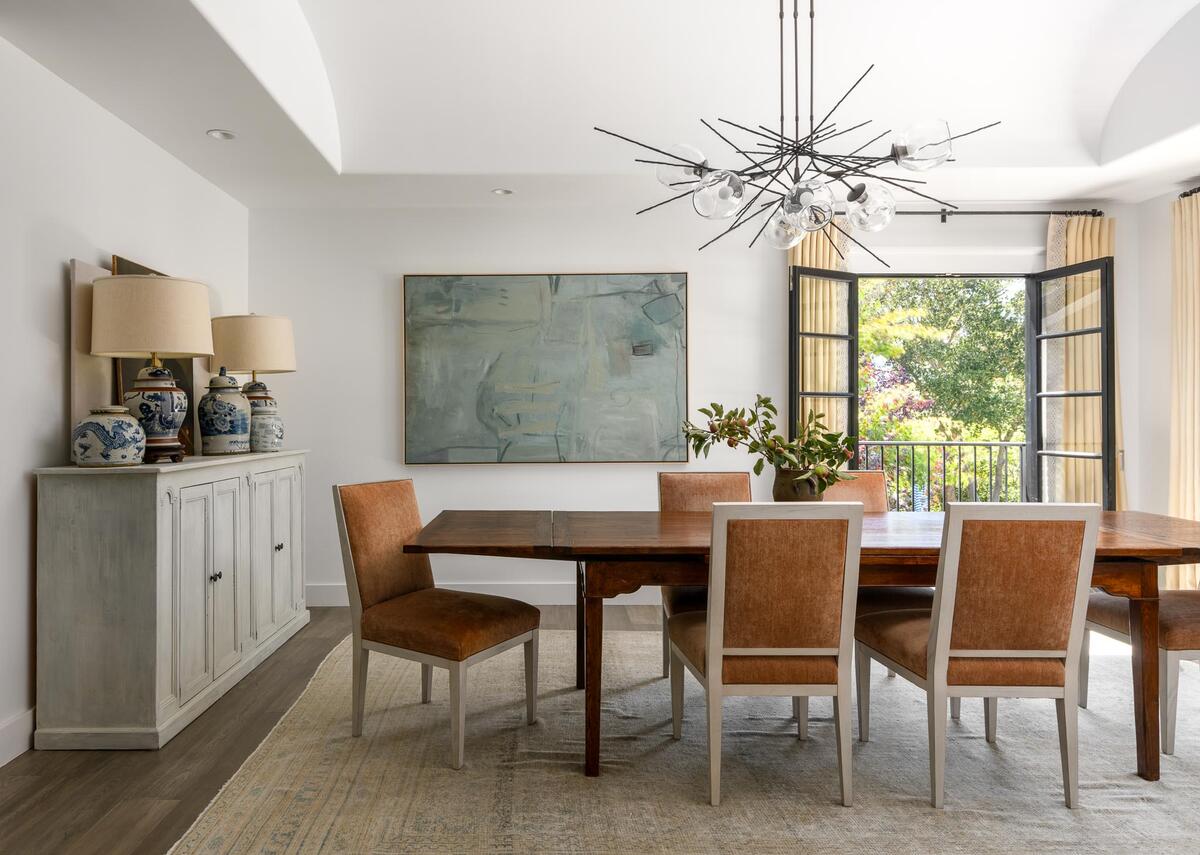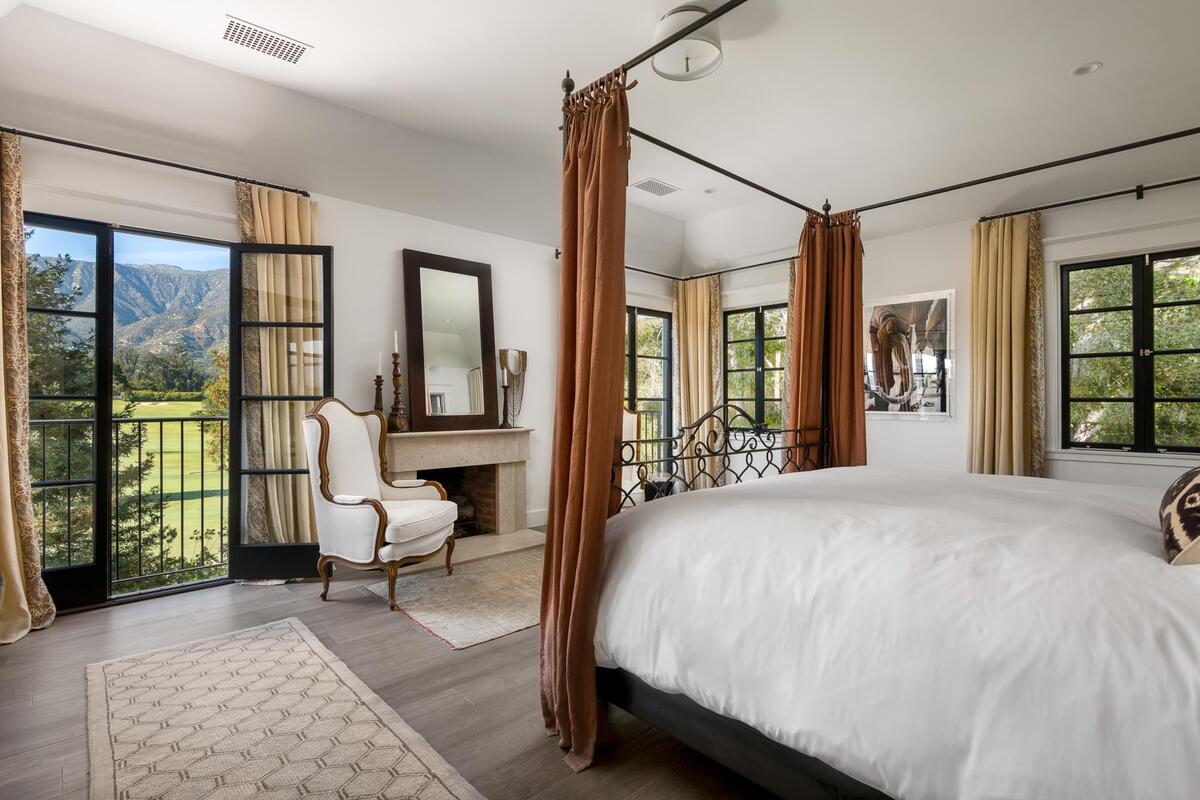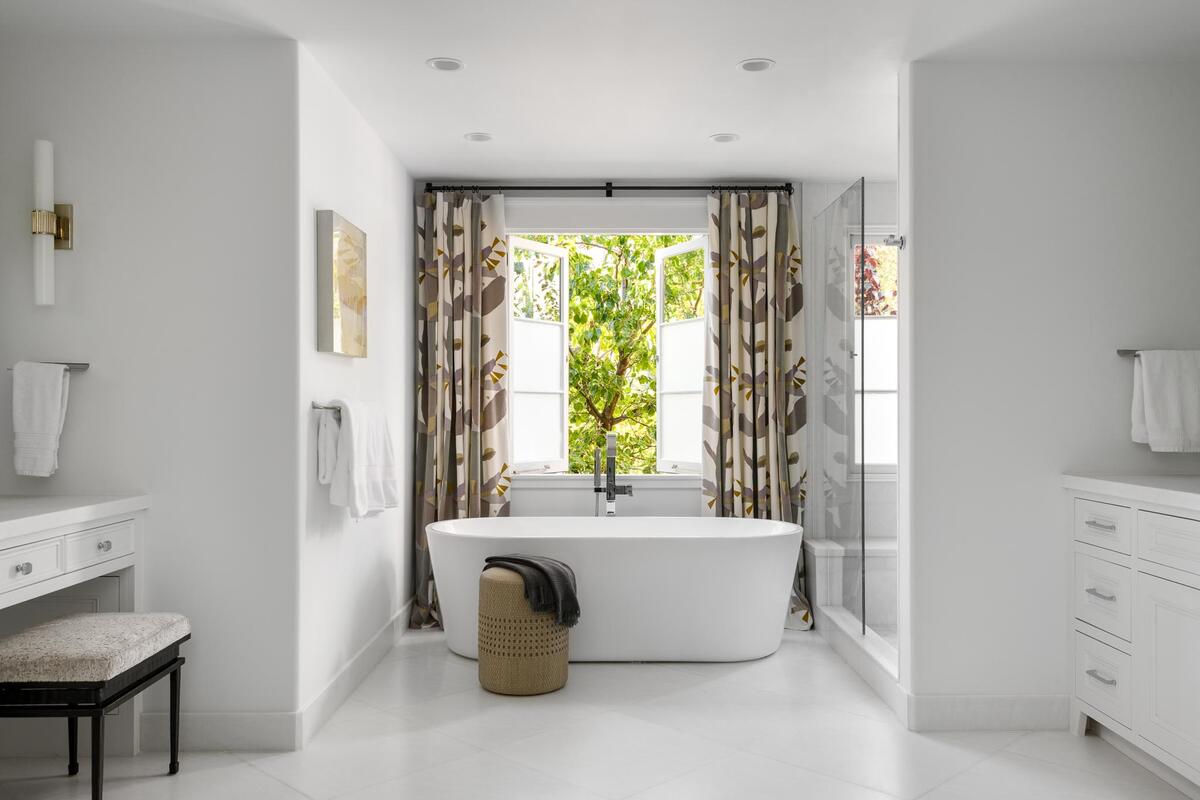The 50 States Project is a series of candid conversations with interior designers across the country about how they’ve built their businesses. This week, Santa Fe, New Mexico–based designer Melinda Browning tells us how an intense marketing outreach sprint paid off for her business, why she sources 80 percent custom furniture, and why her billing structure is flat-fee—with a twist.
What inspired you to launch your own firm?
There were early signs as to what I might want to do with my life, but as Steve Jobs said, you can only connect the dots looking backward. When I was young, I would go to a family friend’s house for playdates and create floor plans with his Legos. I wasn’t modeling in 3D; I was creating spaces in plan view—I’d get all my rooms laid out, and then I’d do the furniture. My mom did a stint as a decorator, and even still, I didn’t quite make that connection.
I went to Southern Methodist University and studied journalism and art history. When I was in my 20s, I got married, and my mother-in-law was an interior designer. She was NCIDQ certified, in ASID, everything—and she worked, but she didn’t have a big firm. As I was doing my first house, she said, “Hey, you’d really be good at this.” And that’s what took me back to design school, because I saw her path of doing it the “right” way.
What did that look like for you?
I got the design degree, took the NCIDQ exam, and then had a short stint, mostly as an intern, for a large architectural firm based in New Mexico. I had a great boss there, and she asked me the funniest question: “Do you go after other people and rearrange the dishwasher before it runs?” That was her indicator of a good space planner.
Then I went to work for [Albuquerque-based designer] Jane Dillon, who’s still a mentor to me to this day—she had been the director of interiors for Marriott Hotels for much of her career, then moved to New Mexico to get married and opened her own firm. We worked in hospitality and high-end residential all over the world, which was this really unique opportunity in a small state where you wouldn’t anticipate that sort of exposure. I started with her in 2002, and worked on and off for her for six years, because I also had twins in the middle of that. The twin thing definitely puts you under—there’s no real work-life balance when you have twin infants.
At the time, I was married to an entrepreneur, which is why it was in my mind to start an LLC while I was working for Jane as a 1099 contract employee. Eventually, I was taking on small projects while working with her. And when the boys were about 8—and they’re 20 now—that’s when I was like, OK, let’s jump back into this.

What was the first big project that shifted the trajectory of your firm?
The real turning-point project was a 7,000-square-foot house in Montecito, which I completed at a distance at the height of the pandemic. It was a large scale, and the client was a great collaborator but didn’t ever go rogue—she might see something that she liked, especially art, but she’d always circle back and say, “I found this thing and I love it. What do you think? Could this work?” And of course I love when people are really connected to the art that’s hanging on their wall.
I also ended up doing a lot of custom for that project, including two iron beds made by my blacksmith in Santa Fe, and then we trucked everything out there. I even had my drapery workroom do everything, and then they crated the panels so they could get all the way to California fairly unruffled. I know I’m not the only designer who does work outside of their local area, but to do a project of that magnitude and with that level of customization was confidence-boosting.
How has your business evolved?
I am a big believer that people want to work with people they like—obviously clients, but also contractors, builders, architects and subs. But because I felt like that personal connection was so critically important, I never really marketed my business. I just let it grow organically. In 2018, I worked with a business coach [outside the] industry. When I told him I wanted to do a business development push, he said, “You have to reach out to five people every single day—and it only counts if they come back to you. You can email, call or see them in person, but you can’t just do an outbound email.” He also made it a game: “If you fall short of five, it doubles and you add it to the five the next day.” At one point, I was literally having breakfast, lunch, drinks and dinner with four different people. I think I did it for four to six months. I was setting up all these meetings—and I have to tell you, it has had the most far-reaching ramifications. That was back in 2018, and in the last 12 months, I’ve gotten so many phone calls where somebody has been referred to me, and it was all related to that push.
What did you think you needed from that coach?
I realized that I was at a turning point in raising my family. I thought that I could level up my volume. I had a girlfriend who had worked with him at a turning point in her career, and I just called him up. I had no idea he was going to put me on that treadmill. I mean, I was exhausted, because I was taking all those meetings while also trying to work.
Did you feel the results immediately, or was it about the long game?
It was both. I did see some immediate results. That first boss I had, for example, had an entirely commercial architecture firm. They will still draw a home for a big commercial client, but they won’t go beyond the architecture. After I reached out to her, she almost immediately—within 60 days—referred a great, large-scope project to me. And I still get calls where someone says, “Oh, so-and-so gave me your name,” and it’s some Realtor that I reached out to back in 2018.

What does a full plate look like for you today?
Now my kids are in college and I’m an empty nester, which has been another transition. I’m able to have work be my primary focus, rather than splitting my focus between family and work. And with that, I’m headed toward working on large-scale, soup-to-nuts projects with defined timelines and a clearly defined scope. I can’t say that every one of my projects lands this way, but when they do, it is very sweet, and they feel very comfortable.
Santa Fe is a mixed bag. It’s an older clientele, so if they have worked with designers before, they are used to the old model. That makes it interesting to develop a new system where we really take the reins and guide them through a defined process.
How has that clientele shaped the way you think about your business?
Santa Fe’s demographic is getting younger, which is great. We are a pretty saturated market for design, but I feel like we have a collegial environment. We have a real mix within our profession when it comes to styles of working, and aesthetic styles as well. That’s great, because it removes the idea of competition.
What kinds of resources are available locally, and how does that selection shape the way you source?
It’s funny, because when I met you [on the BOH Insider tour of Ateliers Saint-Jacques] in Paris in January, we were all in the forge and I said something about “my blacksmith.” All of the other designers were like, “You have a blacksmith?” Actually, I have two—three, really. That’s what’s so amazing about Santa Fe, is the incredible artistry.
How much of what you’re putting into a project is custom or manufactured locally?
I’m probably 80 percent custom, and then 20 percent off-the-rack for things like lighting, though even some of the significant lighting is custom. That’s the crux of what I do: I want people to have things that no one else can have.
I’ll give you an example: I was on Tradd Street in Charleston with my kids in 2018—the famous street with all the gorgeous houses—and this gate caught my eye. I snapped a photograph of it. When I started that project in Santa Barbara in 2020, I was going through my bank of inspiration images and found that photo. I took it to a meeting with a Santa Fe blacksmith, who helped me articulate the design into a custom king-size bed. It’s one of my favorite design moments.
Maybe this is generalizing, but when I close my eyes and think of Santa Fe, there is a very specific type of interior that comes to mind. How does that aesthetic impact the work you’re doing?
I am a big believer in a sense of place. I think it’s really important to honor that, but it doesn’t have to be in a super literal way. Back in the 1980s and early 1990s, Santa Fe design was all Kokopelli—that’s too literal for me. So what I really think about are the colors that work really well against our landscape. For example, I wouldn’t use cool grays here. Other things to consider in the high desert are how the light is going to play with whatever you do, because the light is so strong, and a lot of our homes have these big picture windows, such that it can almost become blinding if you’re using too strong of a color. And then it’s other subtle things, like how the ironwork and certain kinds of carving [can nod to] that sense of place.
They are very different in style and aesthetic, but I worship at the altar of local architect John Gaw Meem and designer Alexander Girard. I’ve had the good fortune to work on a couple of John Gaw Meem houses, and his sight lines and sense of space—and then down to his details, like some of his carved doors—are just incredible, and I draw inspiration from his work all the time, particularly in historic properties. I also have the great fortune of living in Girard’s former studio, which had this built-in furniture. And the way he approached interior space in a Santa Fe residence—he would fill in the exposed vigas in a ceiling and paint it to create this undulating wave. You can see it in his work at the Compound Restaurant, this really fun approach to our vernacular that feels interesting and new. I mean, that was in the ’60s, so of course it’s not that new anymore, but I love that idea of finding ways to be clever and still honor this sense of place.
What does it mean to bring that sense of place into a new build?
It really starts in the architecture—in the tension and juxtaposition that exists between the natural landscape and a contemporary structure. The use of natural materials is also important to me. At the end of the day, I feel that people want to touch things that come from nature. They want wood and stone, and green material like plants and trees. Especially in a new build, it’s so important to keep our connection to the natural world.

What does your team look like?
I have a talented designer who works with me. She does all the CAD drawings, and then some of the projects she can really run with—she does the initial pulls of just about everything and comes to me with a concept, and then I tweak it with her in more of a creative director role. That frees me up for time to think more strategically about what I want to do next.
How have you approached billing for your work?
That’s been an evolution. But let me preface this by saying that I have gotten to a point where I don’t get people who are inclined to shop me. Maybe it’s a law of attraction thing, I don’t know. Maybe it’s because so much of what I do is custom—like, I had a [prospective client] say, “I have buying privileges at the World Trade Center in Dallas. How do you feel about that?” She didn’t hire me. But what I told her was that I feel fine about it, because that’s going to be less than 20 percent of what goes into your project if I’m your designer. I don’t operate in the space where somebody can call and say, “Oh, I got it on the internet, I found it for less.” So that helps, and is foundational to the billing conversation.
I also have mostly single or empty-nester clients. Even when I was pregnant and raising my own small children, I just wasn’t the person clients would approach to be the family designer. That means my clients are busy doing their own thing, and they know and respect what I do. They are CEOs or lawyers or whatever, and they get paid well to do it. But they’re fine with the fact that I get paid well to do what I need to do, too.
Some of the early designers I worked with did very standard hourly billing and a cost-plus markup. I mean, some of them literally had a line [on their invoice] where it was like, “Product price, $1,000. Designer’s profit, $300.” I have colleagues who still do it just like that, with a standard markup in their contract. My markup is more fluid, and it really depends on my relationships with my vendors. I have internal formulas I use, but if I think a piece is critically important to a project, I might not mark it up at all, you know? Or it might be minimal, because it’s a 1stDibs item and I’m not going to sell it for more than they could purchase it themselves. But then I might have a much deeper margin on an upholstered piece from a favorite vendor. I also don’t use the term discount, because we’re not purchasing things “at a discount.” We’re purchasing things from trade and wholesale sources, just like Nordstrom is, and then we are reselling that product.
And here’s the thing: When I run reports in Studio Designer to look at the overall profitability of a project, what’s interesting is how it all kind of shakes out. I’ve been doing this a long time now, and I’m able to look at trends across projects. That keeps me from getting too focused on the micro of one item.
Are you still billing hourly, or have you moved away from that as well?
I do still have projects where I’m billing that way, but I’m moving toward a flat fee with a contingency if they want to go out of scope—and we’re collecting that contingency fee upfront.
How does that work?
It just sits in an escrow account by itself, and it doesn’t get touched unless the clients want to go out of scope. At that point, we have a conversation: The scope says you can reselect one or two pieces in each room after seeing the presentation. If you want me to show you 10 coffee tables, I’m fine with that—who would ever say, “Oh, no, sorry. You just get this one and one alternative, and you have to choose between the two.” That doesn’t seem very consumer friendly. At the same time, you can’t be selecting things indefinitely if you have a flat fee. So I just say to people, “If you want to look at 20 lamps, I’m happy to do that—and that’s your right as the client to have as many selections as you would like,” and we’ll just talk about it [and change the scope of the project]. And if none of it gets used, I apply that money when we go to make the orders, or I’ll give it back to them.
Do clients appreciate that approach?
When I’m talking to clients about doing a large living room, I’ll sometimes say, “Just so you know, this is going to be like an expensive luxury car. You just put that number in your mind.” They choke a little bit sometimes, and sometimes I have to talk them through it—like, “OK, there are two sofas, two chairs and a large coffee table in here,” and just go down the list. After that, they get it. I’m happy to educate them a little bit and talk through why we make the choices we make and where to invest their money.
I used to be nervous about the fee part of it, but I’m noticing that lately, even when I say the big flat-fee number, people are like, “OK, great. That seems fine.” And anyway, I want people to have a five-star experience—and in order to do that for people, you need to be paid accordingly. It’s actually the product that’s harder, sometimes. Often, they haven’t bought any furniture in a long time, and they don’t realize how much prices have gone up.

How do you think at a macro level about profitability?
What really helped me was seeing the business as its own entity, separate from myself. It’s funny, because friends have said, “Wouldn’t it be fun if you came over for a glass of wine and talked about what I might do in my living room?” And of course in my mind—for Melinda personally—it does sound like a lot of fun to go to your house for a glass of wine while we talk about your living room. I’ll come over and tell you to move your sofa 3 feet to the left all day long! I had to say to myself, “Yes, Melinda would love to do that, but Melinda Browning Interior Design is a business, and as an ‘employee’ of that business, I have to do what honors the business.” And so what I actually say to them is, “No, that sounds like work to me, because that is what I do for a living.”
That’s a really important distinction to make for yourself.
It just helps to [lessen] that awkwardness. I had to come to that conclusion when my kids were little. I remember thinking, “If I’m out there undercutting the business, why am I doing it? I might as well be at the pool reading a book while my kids splash around.” I mean, I have other hobbies, you know?
What does success mean to you today?
I want to have freedom. I think freedom is the biggest marker of success as a business owner—the ability to travel, to get inspired, to make my own schedule. To say, “I’ll work on Saturday afternoon so that on Wednesday I can go do X, Y or Z.”
The other thing I would say about my philosophy in general is what a privilege it is that people trust us and invite us into their lives to create the backdrops of their memories. We are creating environments where marriage proposals and holiday celebrations happen, where babies are brought home, and we get to be a part of that. A really talented architect I’ve worked with over the years once told me, “It’s their movie, Melinda. We’re just building the set.” I will never forget that as long as I live. And I think that’s the most critical piece to remember: We’re going to create these beautiful spaces, but at the end of the day, we’re going to walk away from that project and those people are going to live their lives with that as their environment. At the end of the day, I really just want to do good work.
To learn more about Melinda Browning, visit her website or find her on Instagram.




























